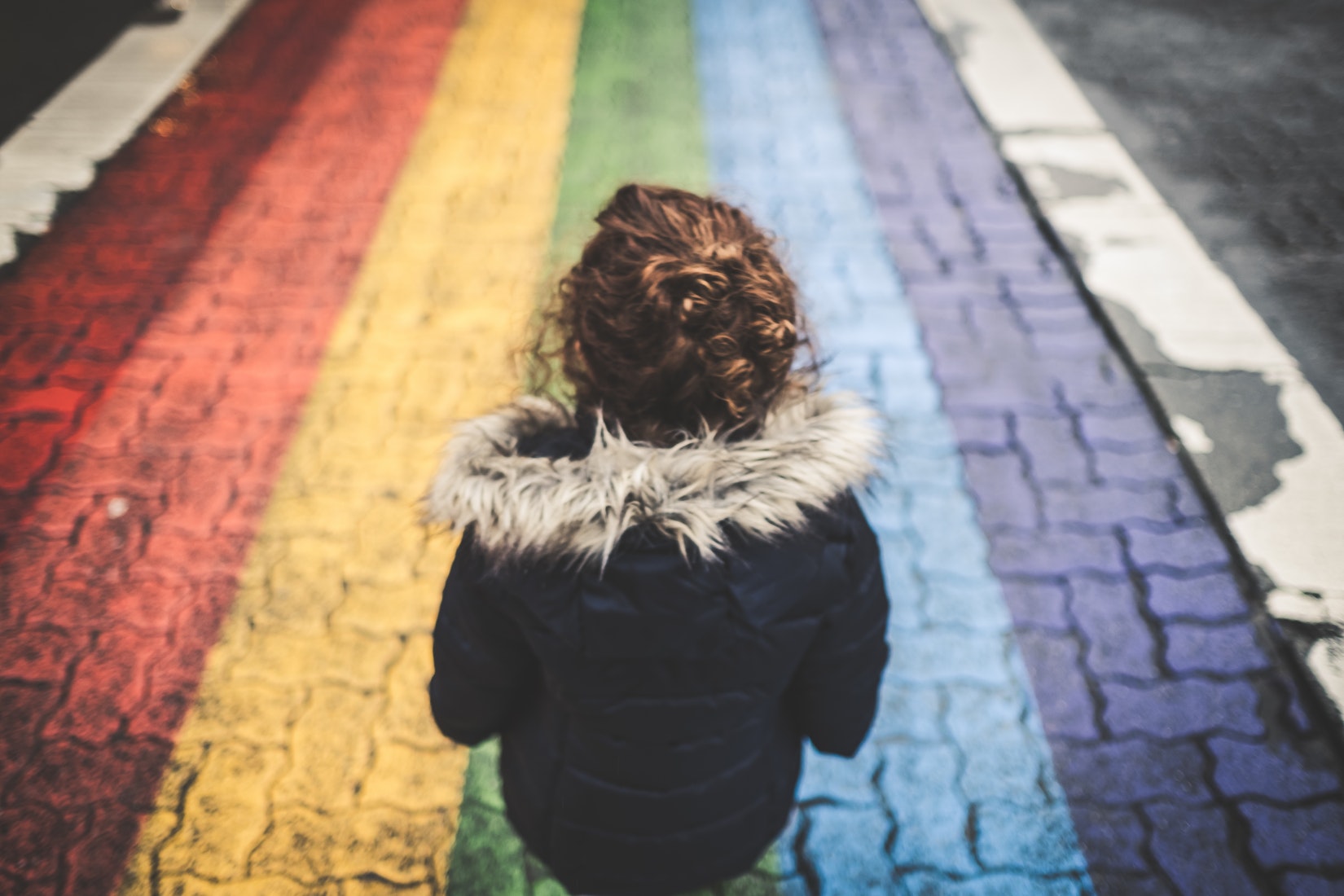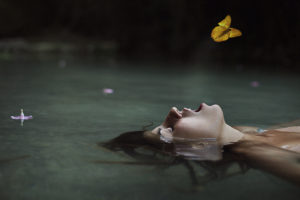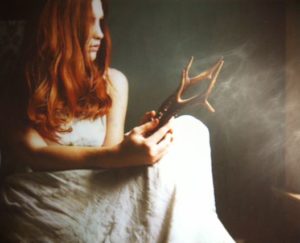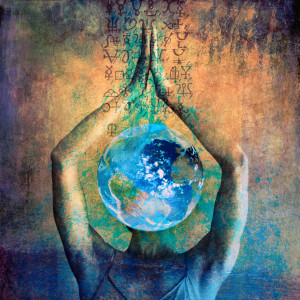Bisexual.
The first time I ever heard that word I was in 9th grade history class. I remember my entire body suddenly … listening. I looked down at my bare legs and the sandals I was wearing, taking in that provocative word, wondering if this was the word I had been unconsciously searching for. The word that would explain things. The word that would explain me.
“What does that mean?” I asked my friend who was sitting next to me, the one who had just proclaimed “I’m bi.”
“It means I like both boys and girls,” she said, watching my face closely to see if I was shocked.
I rolled the word back and forth in my mouth. Bisexual, meaning both. A thrill of excitement washed through me and I remember thinking, “So that’s what I am. I’m bisexual.” The teacher called for our attention and I faced the front of the room, stenciling “Bi” on the paper-bag cover of my history book. Claiming the word for myself.
Today we have several terms that indicate non-binary sexual identity—sexual fluidity, pansexual, omnisexual, bisexual. But in 1982 bisexual was the only word I had access to, and it was enough. Enough for me to have a deeper understanding and awareness of myself, an acceptance of myself. The magic for me was not only that I could put a name to what I had been feeling for as long as I could remember, but also the very fact that if there was a name, it meant there were others like me. I was no longer alone. And I had felt alone for a long time.
It wasn’t until I was a senior that I learned about bisexuality from a sociological point of view. By that time I’d owned the label “bisexual” for three years and had acted on my attraction to girls exactly once, with my best friend. Had it not been for the closeness of that relationship, I don’t think I would have risked it. (I did not, however, have the same inhibition with boys.) I mostly kept my sexual identity to myself, but sometimes I would share my story with close friends and hear “I feel the same way!” or versions of it more often than I would have guessed.
In sociology class I learned that everyone falls somewhere on the Kinsey scale of sexual orientation, with zero being exclusively heterosexual and 6 being exclusively homosexual. Most people fall somewhere between 1 to 5 on the continuum, meaning many people have sexual attraction and/or sexual experiences with the same gender, even if they identify as heterosexual, and with the opposite gender even if they identify as homosexual. Learning that helped normalize my experience in a way that allowed me to be more honest about my sexual identity.
Of course, researchers now understand that the Kinsey scale is limited to understanding bisexuality as the compromise between two poles, rather than as a distinct sexual orientation, which the Klein Sexual Orientation Grid seeks to do. Additionally, research from the Klein Grid shows that sexual orientation is in fact dynamic and can shift over time.
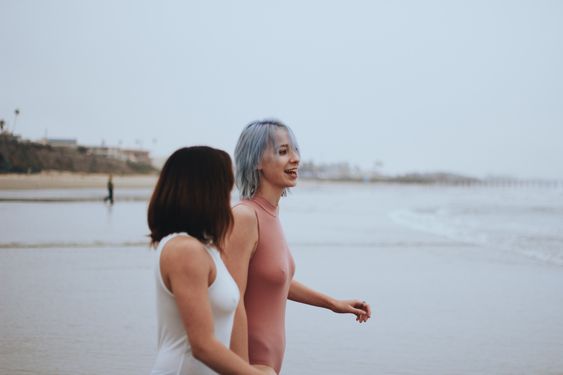 If you had asked me before I turned 29 how I identified, I would have said “bisexual, leaning toward men.” But the first time I fell in love with a woman changed the way I thought of myself. Until then I didn’t think it would be possible for me to fall in love with a woman. I always believed I would end up married to a man, with children. I suppose you could attribute it to societal conditioning, or perhaps the fact that I had never seen two women in a monogamous relationship, but it was inconceivable to me that I could be happy in a monogamous relationship with a woman.
If you had asked me before I turned 29 how I identified, I would have said “bisexual, leaning toward men.” But the first time I fell in love with a woman changed the way I thought of myself. Until then I didn’t think it would be possible for me to fall in love with a woman. I always believed I would end up married to a man, with children. I suppose you could attribute it to societal conditioning, or perhaps the fact that I had never seen two women in a monogamous relationship, but it was inconceivable to me that I could be happy in a monogamous relationship with a woman.
Now, at 50, I’ve been in love exactly four times in my life—twice with men, twice with women. I’ve been married two times, once to a man and now to a woman. Experientially, that puts me right down the middle, but since my same-sex relationships have been in my later years, it’s more accurate to say now that I’m bisexual, leaning toward women.
In my experience, being bisexual can feel incredibly lonely. In point of fact, loneliness is one of the primary stressors bisexual individuals face and can lead to anxiety, depression, and suicidality—even more so than in homosexual individuals. According to research, bisexuals are more likely to experience these negative emotions and behaviors because of the double bias they face from the heterosexual and homosexual communities. This double bias is the reason only 33 percent of bisexual women are out of the closet today compared to 71 percent of lesbians, while only 12 percent of bisexual men are out, compared to 77 percent of gay men.
I have certainly experienced this double bias. In fact, I have experienced more bias from the homosexual community than from heterosexuals. My theory on this is that sexually engaging with two women at the same time is a typical male fantasy that is known and often accepted by women in the heterosexual community, thus allowing women to explore feelings of attraction to other women and creating more natural acceptance in the heterosexual community for bisexual women. However, on the downside, this fantasy is often the lens through which the heterosexual community understands female bisexuality, rather than as a valid sexual orientation of its own. For men, there is no corresponding, widely accepted fantasy that allows men to explore feelings of attraction to other men within the heterosexual community. So, bisexual men tend to experience this double bias more from the heterosexual community.
When I entered the lesbian community at age 29, I was accused of posing, being a sexual tourist, experimenting, and putting the lesbian community at risk many times. I remember being at a party once and being told by a lesbian woman that “I’d go running back to men soon,” even as I was holding my girlfriend’s hand. The fact that I didn’t refer to myself as a lesbian seemed to only make matters worse.
There’s tremendous social pressure to conform to either heterosexual or homosexual. I believe it’s because as humans we are more comfortable with binary systems. Either you are this or you are that, but you are certainly not both. Fortunately this seems to be changing in the millennial generation. GLAAD’s 2017 Accelerating Acceptance report found that 20 percent of millennials identify as LGBTQ, but that doesn’t mean they all identify as gay or as a lesbian either. Millennials are the most sexually fluid group to date. Suddenly there is a whole host of new terms that can help someone speak to their sexual and gender identity.
I look like a heterosexual woman, meaning I present as gender-conforming feminine. Once you get to know me, you realize that beyond my looks, I’m quite balanced (non-binary) in my gender expression—taking on qualities and characteristics of both masculine and feminine. Even so, my gender identity (how I see myself) is female. I’m being very clear here, because we now live in a time where one’s gender identity can’t be taken for granted or reduced to binary concepts. And, I argue, neither can one’s sexual identity.
Most people assume I am the sexual orientation of my partner. Meaning, if I’m in a relationship with a man, I must be straight and if I’m in a relationship with a woman I must be gay.
“Actually, I identify as bisexual” is my handy conversation starter (or stopper) if I’ve been labeled either gay or straight out loud. People’s reaction to my correction usually lines up with one of two responses—“Really? What does that mean?” or “But really you’re a lesbian because you are in a relationship with a woman, right?”
I’ve found that the longer one is in relationship with a particular gender, the more society sees this as confirmation of one’s sexual orientation and the harder it can be to maintain a public bisexual identity, even with friends and family. I’ve been in a same-sex, monogamous relationship for 16 years and my sexual orientation is still bisexual. In the past several years, even straight friends I’ve had since I was in my teens and 20s, who have known me through all of my relationships—both with men and women—have begun to refer to me as a lesbian. That I inherently feel the pressure to accept the label of lesbian and find it harder to maintain my identity within the context of my relationship is grounded in the fear that others will hear my claim as a negation of the commitment or love I have for my wife, which it is not.
The assumption people make is natural, even if technically incorrect. Occasionally I don’t correct others. Even though it feels like a misrepresentation of a primary part of my identity, it is sometimes easier to allow others to make assumptions. Why? Because nothing about bisexuality is self-explanatory, and the myths surrounding it are disturbing, which puts me in the role of educator or defender every time I speak up.
Here are some of the misconceptions I’ve heard: Bisexuals are polyamorous. Bisexuals can’t be monogamous or faithful. Bisexuals are just straight or gay people afraid to embrace the truth. Bisexual women are sexual tourists in the lesbian community and will run back to their safe straight lives as soon as things get tough. Bisexual men are really gay but afraid to come out. Bisexuals are confused and indecisive. Bisexual women are dangerous and bring STDs into the lesbian community. Bisexual men are dangerous and bring AIDS home to their wives. Bisexuals are promiscuous and sex addicts. Bisexuals are just attention-seekers, trying to take advantage of privilege because it’s easier (if in relationship with the opposite sex) or trying to infiltrate a marginalized group because they think it’s “cool” (if in relationship with the same sex).These myths are a main reason why so many adult bisexuals hide their sexual orientation.
Unfortunately, when a bisexual starts a relationship with someone of the opposite gender from their last relationship, mistrust and misconception within their community often follows. Many bisexuals have had the experience of losing queer friends when they start dating someone of the opposite sex and losing straight friends when dating someone of the same sex. With each new relationship, it can feel like “coming out” all over again. This further compounds the pressure to “pick a side.” And the backlash within the gay community can be particularly intense. In fact, many gays and lesbians refuse to date people who openly identify as bisexual.
 Bisexuals, more than other orientations, can be seen as “confused” because of the nature of self-questioning they often undergo. “If I am attracted to both men and women but have been exclusively in relationships with men, am I bisexual?” “If I am in a monogamous relationship and haven’t acted on my bisexuality in years, am I still bisexual?” “If I’m unhappy in my current relationship, does that mean I’d be more suited to a relationship with the other gender?” These are natural questions for bisexuals to ask themselves as they navigate a dynamic sexual orientation, but it would be a mistake to invalidate the bisexual experience as merely “questioning.” Bisexuals aren’t any less likely to commit to a relationship than other groups.
Bisexuals, more than other orientations, can be seen as “confused” because of the nature of self-questioning they often undergo. “If I am attracted to both men and women but have been exclusively in relationships with men, am I bisexual?” “If I am in a monogamous relationship and haven’t acted on my bisexuality in years, am I still bisexual?” “If I’m unhappy in my current relationship, does that mean I’d be more suited to a relationship with the other gender?” These are natural questions for bisexuals to ask themselves as they navigate a dynamic sexual orientation, but it would be a mistake to invalidate the bisexual experience as merely “questioning.” Bisexuals aren’t any less likely to commit to a relationship than other groups.
The truth is that we all make assumptions about each other. All of the time. And we are often wrong. It doesn’t feel good when someone makes assumptions that aren’t true about you. We would all be so much better served to be generous in our assumptions about each other. To believe that we each want to be known and loved. We all are trying to be good people. And we could all do with more self-acceptance.
Truly, the more we can accept ourselves, which starts by telling ourselves the truth about who we are, the more we can come to accept others for who they really are.
If you know you are bisexual, give yourself permission to be who you are. Claim it for yourself, even if there is no one you can tell right now. Fully allow yourself to say “I am bisexual and I accept that about myself.” If you can, reach out to others who are bisexual and share your story. There are so many of us, and most of us live alone with our bisexuality as though it needs to be a secret. It does not.
Each time I tell someone that I am bisexual, I feel like I am coming home to myself. I am reminding myself of who I am at the core of my sexual being. And by speaking it aloud, I am helping others to give themselves permission to do the same. I am claiming my truth, and I invite you to do the same.
Photos (from top to bottom) by Cory Woodward, Unsplash, and Elizabeth Tsung

